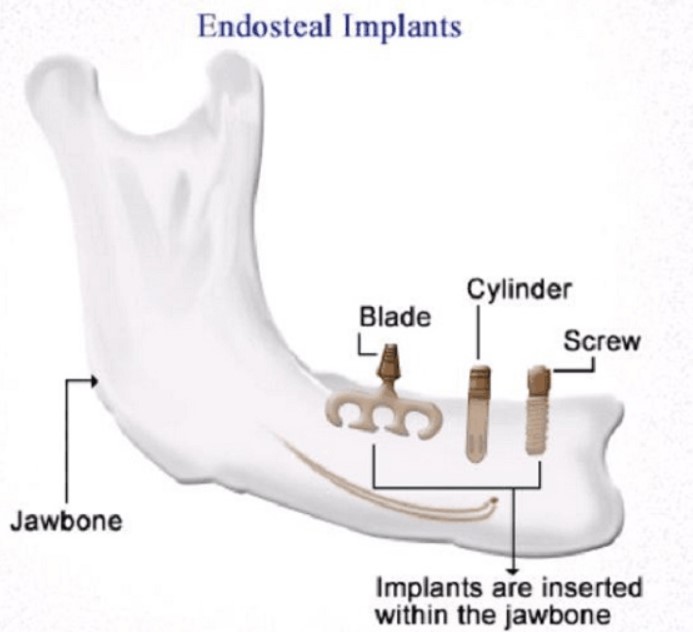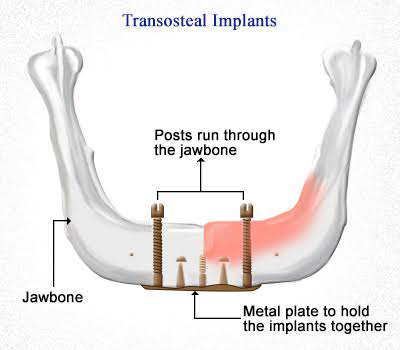
Table of Contents
However, not all patients know about the dental implant treatment option. Fortunately, this article contains all the key information you need to know about the treatment. Keep reading to learn more about the dental implant procedure, costs, benefits, and risks involved.
What are Dental Implants

A dental implant is a surgical fixture inserted into the jawbone and allowed to fuse with the bone over time. Modern dental implants are based on osseointegration, a biologic process in which materials such as titanium or zirconia form an intimate bond with the bone.
An implant consists of three(3) parts:
- Screw: acts as the root part of the tooth, so it is secure.
- Abutment: the connector that connects the screw and the final part, the dental crown.
- Crown: the part of a dental implant that everyone can see. It’s the part that looks and feels like your natural teeth.
How Much Does a Dental Implant Cost in Australia?
The cost of dental implants will vary depending on several factors, including the number of teeth that need to be replaced and whether a bone graft or sinus lift is required.
In Australia, the cost of dental implants can range between $3,000 and $5,500 per tooth. A dental implant in Australia can also cost up to $5,514 per tooth.
Dental Implants Cost Comparison
While the initial cost or outlay required for dental implants is higher than alternatives such as bridges or dentures, the alternatives have maintenance costs that implants do not.
A denture or bridge will need to be replaced every five years. When these replacements are compared to the cost of a 30-year dental implant, the implant may be less expensive.
Dental Implants Procedures

A dental implant is a long-lasting tooth restoration that can last your entire life. Dental implants are placed directly in your jaw instead of dentures, which can move around in your mouth. This enables an implant to resemble and function similarly to the natural tooth it replaces.
1. Initial Consultation
During your dental implant consultation, your implant dentist will assess the health of your teeth, gums, and jawbone. The dentist does this to determine whether there is sufficient bone mass to place dental implants safely.
This is especially important if one or more teeth are missing. A CBCT scan may be required to obtain more information about the surrounding tissues. Your implant dentist will also review your medical history and treatment goals.
2. Preparation
Many patients require some preparatory work before they can receive implants. For example, removing one or more of your remaining natural teeth may ease your treatment.
This is frequently the case when a patient’s teeth are so badly decayed or damaged that they would have to be extracted anyway.
Some people also need gum disease treatment before getting implants. After your mouth has recovered from any necessary extractions, you will need to see the oral surgeon who will place the implants in your jaw.
3. Placing the Implant
The implant dentist will make an incision in the gums to expose the bone during dental implant surgery. Then, holes are drilled in the bone to accommodate the metal post of the dental implant. After that, the post is implanted deep into the bone to serve as a tooth root.
You still have a gap where the tooth is missing at this point. A type of partial temporary for the appearance can be used if necessary. These dentures can be removed for cleaning and sleeping.
Osseointegration begins after the metal implant post is placed in your jawbone. The jawbone grows into and unites with the surface of the dental implant during this process. This process, which can take several months, provides a solid foundation for your new artificial tooth, like roots for natural teeth.
4. Abutment Placing
To place the abutment the oral surgeon (or dentist) will reopen your gums to reveal the dental implant. The implant is attached to the abutment and the gum tissue is closed around the abutment but not over it.
When the dental implant metal post is implanted, the abutment is often attached to it. That means you won’t need an additional surgical procedure.
Your gums must heal for about two weeks after the abutment is placed before the artificial tooth can be attached.
5. Fitting the Crow
When it comes time to attach the permanent implant crown, your dentist has two options:
- inserting a small screw through the top of the crown into the abutment (known as screw-retained dental crowns), or
- attaching the crown to the abutment with dental cement (known as cemented crowns).
How Long Does a Dental Implant Procedure Take?
The extent of a dental implant procedure can take is 3-9 months. However, much depends on the patient’s circumstances and healing abilities.
If a patient requires bone augmentation or a sinus lift, these procedures must be completed first before any implant can be permanently attached. Add in the recovery/healing time, and you’re looking at an extra 4-8 weeks.
What Happens Before, During, and After Dental Implant Surgery?
A dentist or oral surgeon can perform the surgery between one to two hours.
Before the dental implant procedure, the area is numbed with local anesthesia, and sedation may be administered if the patient is nervous.
During the procedure, a small incision in the gum is made, and a titanium screw is inserted into the jawbone.
After that, the gum is stitched up and allowed to heal. Following surgery, the patient must take care not to injure the area while it heals and must return for follow-up appointments to ensure everything is going well.
Dental Implant Contraindications
Dental implants are not appropriate for everyone. Certain medical conditions, such as uncontrolled diabetes, bleeding disorders, cancer, radiation therapy to the jaws, and chronic illnesses, may make dental implants contraindicated.
Furthermore, heavy smokers and people who have previously failed dental implants are not good candidates for dental implants.
Relative contraindications include cognitive decline or medical conditions that may jeopardise the life or lifespan of the patient.
Precautions for placing dental implants should be viewed concerning the evidence-based exposures that can contribute to the risk of failure, including but not limited to local, behavioural, and medical factors. The risk for dental implant failure increases in association with
- Growing children may not be able to get a dental implant until their jaw growth and development is complete.
- People with chronic diseases such as diabetes or leukemia may not be good candidates for dental implants.
- Dentists may not recommend surgery for those who smoke since smoking can slow healing
Benefits of a Dental Implant
Dental implants are the closest thing to a natural tooth. They look, feel, and function like a natural tooth and have many advantages over other tooth-replacement methods such as bridges and dentures. These benefits
- Dental implants are permanent; with proper care, they can last a lifetime.
- They are indistinguishable from your natural teeth in appearance and feel.
- Dental implants work like natural teeth, so you can eat whatever you want.
- Dental implants help to preserve the jawbone – Unlike other methods of tooth replacement that can cause bone loss in the jaw, dental implants help to preserve the jawbone by stimulating and keeping it healthy.
What are the Risks of Dental Implants?
Like every other surgery, there are risks involved in dental implant surgery. These can include infection damage to the surrounding teeth and nerve damage. In rare cases, the implant may fail to fuse with the bone or may be rejected by the body.
Other risks include:
- Sinus damage: Implants used to replace your top teeth have the potential to penetrate the sinus, causing discomfort or infection. Your upper jaw is right next to your nasal sinuses. If this occurs, your dentist will advise you on how to handle the situation.
- Infection: Dental implant surgery, like any other oral surgery procedure, carries the risk of infection. Your dentist will instruct you on keeping your incisions clean as they heal. Contact your dentist if you experience pain, swelling, or fluid draining from the incision site. Additional procedures may be required to treat a gum or bone infection.
- Nerve damage: Before the procedure, your dentist should take X-rays to locate the nerves in your mouth. Because nerve damage can have long-term consequences, you should discuss the risks with your dentist before the procedure.
Types of Dental Implants
Dental implants are posts or frames surgically implanted beneath the gums into the jawbone. They serve as a solid foundation for artificial teeth. Dental implants are classified according to their purpose and location.
Endosteal Implants

They are appropriate for most patients, but they require a good, healthy jawbone to fuse to. These implants are just placeholder posts in the shape of screws. They insert the jaw into which the false teeth are fitted.
It takes some time to heal after the procedure is completed and the pieces come together to form a stronghold. Once healed, the false teeth can be fitted to the post to match the surrounding teeth.
Subperiosteal Implants
This is the primary substitute for Endosteal Implants. Instead of being fixed into the jawbone, subperiosteal implants rest on top of the bone but beneath the gum.
A metal frame with a post attached is placed beneath the gum. The gum then heals around the frame, securing it. The false teeth are attached to the gum-derived poles.
This procedure is only used if the patient does not have enough jawbone to support an implant or does not want to undergo extensive oral surgery to add bone to the area.
Transosteal Implants

Transosteal implants are the least common because they are the most complicated. One reason is that it entails attaching a metal plate to the underside of the jawbone. To secure the plate, screws are drilled through the jawbone.
Transosteal implants, as a result, can only replace missing lower teeth. However, for patients with severe bone resorption, they may be the only option. They may not have enough bone to support an endosteal or subperiosteal implant.
What Are the Alternatives to Dental Implants?
Dentures are the most common alternative to dental implants. Removable dental appliances that can replace one, several, or all teeth in the upper or lower jaw. Dentures are typically made of plastic and metal and are designed to fit snugly over the gums.
A fixed bridge is another option for dental implants. A fixed bridge is a dental appliance that is irremovable because it is cemented into place. It is typically made of porcelain fused to metal and is designed to replace one or more missing teeth.
FAQ
1. What is the Recovery Time for Dental Implants?
The recovery time for dental implants varies depending on the individual, but it is typically six to eight weeks. Following the implant’s healing, an artificial tooth (crown) is placed on top.
2. How Long Does a Tooth Implant Last?
Dental implants have a long lifespan of 20 to 30 years. However, this depends entirely on how well you care for your teeth and maintain good oral hygiene.
3. Do Dental Implants Hurt?
You will most likely experience pain or discomfort following dental implant surgery, but it should only last a few days.
When the local anesthesia from the procedure wears off, the pain may become more severe. The pain is most likely to be near the site of the dental implant.
Other side effects of dental implant surgery may include:
- bruising at the surgical site
- swelling of the gums and face, minor bruising, and jaw pain
4. Are Dental Implants Safe?
Dental implants are a safe and effective method of replacing missing teeth. They are constructed of titanium, a biocompatible material that fuses with the jawbone—this aids in support of the new teeth.
Dental implants have a 95% success rate, significantly higher than other tooth replacement options.
Related Articles:
